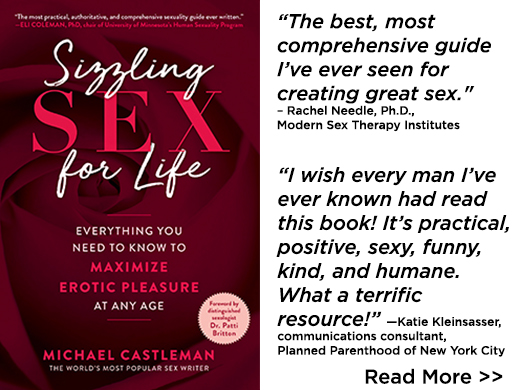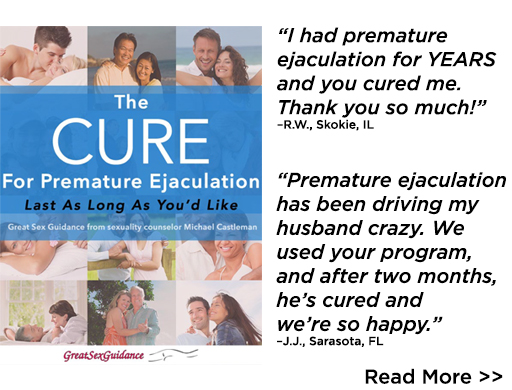
In most states, adolescents can legally have sex at 16. It used to be younger.
In 1970 at age twenty, I fell in love with a seventeen-year-old girl. Decades later, we’re still together, with two adult children and a grandson. Anne and I were lucky that we met in Michigan, where the age of consent, the minimum age for legal lovemaking, was sixteen. Had we lived in any of the dozen states where it’s eighteen, I might have gone to prison for statutory rape.
If you think this never happens, think again. The FBI estimates that U.S. law enforcement agencies annually process some 15,000 statutory rape complaints. More than 95 percent involve cases like Anne’s and mine, adult men and minor girls. A small proportion involves abuse or assault, but the vast majority of adult-child sexual liaisons are consensual. In some, the under-age girls are the initiators and pursuers. And sometimes the men wind up in prison:
- In 2015, an Idaho judge sentenced twenty-one-year-old John Polomo to fourteen years for consensual sex with a friend who was seventeen.
- In 2008 in Florida, twenty-two-year-old Morris Williams was imprisoned for having consensual sex with Alisha Dean, whose Facebook page said she was nineteen when she was actually thirteen.
- And in 1997, a Rhode Island judge sentenced twenty-one-year-old Dylan Healy to twelve years for having consensual sex with thirteen-year-old Heather Kowalski, who ran away from home to live with him, testified in his defense, cried at his sentencing, and swore that when he was released, she would marry him.
In none of these cases did the girls contact police. It was always their parents.
These examples and many others have persuaded most state legislatures, to amend age-of-consent laws with exceptions. Here’s one that lasted until after World War II. For a statutory rape charge to stick, victims, overwhelmingly young women, had to be “chaste.” If defendants, overwhelmingly men, could produce witnesses swearing that the victims were promiscuous, charges could be dismissed. Mississippi was the last state to repeal this exception—in 1998.
Currently, most states have “close-in-age” exceptions that allow two minors or a minor and an adult to have legal sex (or face misdemeanor charges instead of felonies) if their ages are within four years of each other. Anne and I were three years apart. Had Michigan’s age of consent been eighteen, this exception would have saved me.
But in most states, there’s an exception to the close-in-age exception. If the older lover is in a position of authority over the younger—teacher-student, coach-player, military officer-recruit, etc.—sex is verboten.
Age-of-consent laws show that society considers some “too young” for sex. But the exceptions—and the exceptions to the exceptions—show how convoluted this issue is.
Juliet Was Thirteen
How old is old enough? The Bible says that sex is legitimate only for procreation. If we embrace the Biblical view, people are “too young” if they can’t produce sperm or eggs.
Boys start making sperm when puberty spurs maturation of the testicles, typically from age eleven to thirteen. This appears to have been the case for millennia.
However, for girls, procreation-readiness is more complicated. Girls don’t reliably release eggs until a year or two after their first menstrual periods (menarche). In 1800 in the U.S. and Western Europe, that occurred around sixteen. Since then, for reasons not entirely understood but probably having to do with increased fat consumption, menarche has fallen several years. Today, around 7 percent of American girls begin menstruating by age eleven and more than 90 percent have periods by fourteen, with median menarche around twelve. Given the lag time between first periods and reliable egg release, Biblically speaking, girls today are “too young” until around thirteen.
But throughout history, religious injunctions have played only a minor role in sexual initiation. The Roman emperor Flavius Gratianus Augustus (A.D. 359-383) decreed that children could legally consent to marriage and, therefore, sex at seven. The first age-of-consent law, the English Statue of Westminster (1275) forbade “ravishing” a maiden with or without her consent if she was under twelve.
By the eighteenth century the European age of consent was twelve, except in France, where it was eleven. In 1875, England raised it to thirteen.
From Little Adults to Children
Until the late 1700s, childhood, as we understand it, did not exist. Children were considered “little adults.” They lived in an agricultural world and toiled in the fields beside their parents. And when they fancied one another, canoodled like adults as well.
Compared with today’s children, the little adults of the pre-industrial era witnessed a great deal more real, live sex. I recall my third grade class going wild when, on the playground, two dogs went at it. But back in Shakespeare’s day, sex among the livestock elicited no giggles. Family survival depended on it, and farm families carefully managed breeding—with children watching and helping.
In addition, the vast majority of people were peasants living in one- or two-room shacks. As John D’Emilio and Estelle B. Freedman relate in Intimate Matters, their classic history of American sexuality, “The small size of most dwellings allowed children to hear or see a good deal of adult sexuality.”
In Romeo and Juliet (1594), she was all of thirteen. Shakespeare doesn’t specify Romeo’s age, but scholars generally call him sixteen. Juliet can’t wait to have sex with her beau. “Romeo … leap to these arms … and learn me how to lose a winning match.” That is, by losing my virginity, I win you.
The “White Slavery” Panic
In medieval feudal cultures, a tiny minority of nobles had near-absolute power over their many peasant farm workers. Field work was backbreaking, but in addition, many peasant women also toiled on their backs.
This was droit du seigneur, “the right of the Lord,” the feudal custom that gave the nobility the right to bed “their” peasant women, notably brides on their wedding nights. It’s not clear how often the gentry crashed weddings, but throughout history, rich powerful men have generally claimed subordinate women as their sexual playthings—with legal impunity. In colonial America, an estimated 20 percent of maidservants gave birth to children fathered by their employers, either by rape, or voluntarily to improve women’s social position, or some combination of the two.
During the mid-1700s, England spearheaded the Industrial Revolution, and by the mid-1800s, tens of thousands of peasant farmers had migrated to England’s booming factory cities. Like Oliver Twist, they labored under deplorable conditions that, for many women (and some men) included sex with their employers—rape or voluntarily or mixed circumstances.
During the Industrial Revolution, urban sex work surged and became more visible. Poverty or pimps coerced some women into whoring. Others faced more complex choices. They could slave twelve hours a day in hellish factories for next to nothing while contending with employers’ sexual demands. Or quit factory work for sex work. Prostitution was dangerous and degrading, but to some young women, it was preferable. By the 1870s, English social reformers had become appalled by the extent of child prostitution, especially in London, and began agitating to stop it.
Their efforts gained traction. In 1885, the Pall Mall Gazette, a London tabloid, published one of the most influential exposés of all time, “The Maiden Tribute of Modern Babylon,” an investigation of English child prostitution. The series alleged that myriad virgin girls had become “white slaves,” kidnapped by pimps or sold by desperate, drug-addicted parents, and forced into sex slavery. The allegations popularized the term white slavery and ignited one of the greatest moral panics in history.
The series contained a germ of truth. Some young girls were, indeed, trafficked for sex. But according to scholars of that period, crusaders against white slavery vastly exaggerated their number.
The outcry over white slavery persuaded England to raise its age of consent from thirteen to sixteen. Similar exposés in the U.S. had the same effect. Before the panic, the age of consent in most states was ten to twelve—and in Delaware, seven. Afterward, it rose to sixteen or older.
In today’s America:
- 31 states and the District of Columbia peg age of consent at 16.
- In eight states (Colorado, Illinois, Louisiana, Missouri, New Mexico, New York, Texas, and Wyoming), it’s 17.
- And in 12 (Arizona, California, Delaware, Florida Idaho, North Dakota, Oregon, Tennessee, Utah, Virginia, and Wisconsin), it’s 18.
What age do you think it should be?





